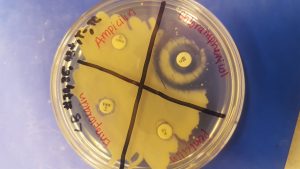Building Information Research Knowldgebase – BRIK is a useful site for all kinds of architecture-oriented research. Here’s a link to the database of built environment research hosted by AIA with NIBS: http://www.brikbase.org/. Self-described as “your information portal to professionally reviewed research in the built environment for professionals by professionals” Here is an example of a …
Sloan Symposium at Indoor Air 2014 The Alfred P. Sloan Foundation Program on Microbiology of the Built Environment has awarded a grant to Indoor Air 2014, the 13th International Conference on Indoor Air Quality and Climate, to be held in Hong Kong from July 7-12, 2014. Paraphrasing a quote on the conference web site from …
This weekend, National Public Radio (NPR) has been heavily promoting a feature on microbiomes scheduled for Monday, July 22nd. If you are a regular listener, you will catch it. If not, you can go to http://www.npr.org/programs/morning-edition/ on Monday or after and look at the lineup for Monday morning’s show.
The Department of Defense, Defense Medical Research and Development Program (DMRDP), Military Infectious Diseases Research Program (MIDRP) and Joint Program Committee 2 (JPC-2) has recently announced a funding opportunity: Military Infectious Diseases Clinical Trial Award (MID-CTA). Detailed descriptions of the funding opportunity, evaluation criteria, and submission requirements can be found in the Program Announcement. The …
Does heavy drinking affect the bacteria in your living room air? I don’t know, but some work I saw at ASM suggests that it might. At the poster session on Day 3, Valdis Krumins from Rutgers had a poster reporting efforts to understand the effect on airborne bacterial concentrations (or, at least, their ribosomal 16S …
Just kidding; I paid to get in, but this conference is not intended for a research architect/building scientist like me. This was my third ASM meeting, and now I know something approaching 1% of the jargon, so I was able to “mine” the sessions, especially the posters, for built-environment-relevant content. Under the surface of the …
The Alfred P. Sloan Foundation has created a new funding opportunity in its Microbiology of the Built Environment (MoBE) program. The Foundation seeks to further the development of talented early stage Ph.D. scientists and engineers by establishing the Microbiology of the Built Environment (MoBE) Postdoctoral Fellowship program. The program will provide support for postdoctoral researchers …
In their just published paper in Environmental Science & Technology, “Tetracycline Resistance and Class 1 Integron Genes Associated with Indoor and Outdoor Aerosols,” Alison L. Ling, Norman R. Pace, Mark T. Hernandez, and Timothy M. LaPara have found that genes escape the indoor environment and can be found 2 km away. The abstract can be …
After some off-line dialogue related to my “Should you lick your baby’s dropped pacifier?” blog post, I have decided to post a separate comment regarding the hygiene hypothesis, mentioned in the introduction, and the plasticizer hypothesis, emphasized by some off-line correspondents. What is clear is that in the modern, human-occupied indoor environment, there are microbes …
A story on the May 6th NPR program, Morning Edition, “Parents’ Saliva On Pacifiers Could Ward Off Baby’s Allergies” features a focus on the human microbiome, partental behavior and babies’ allergies. “That word “microbiome” – describing the collection of bacteria that live in and on our bodies – keeps popping up. This time, researchers say …

